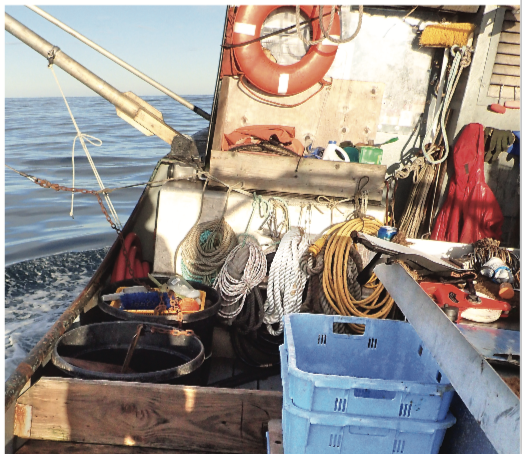
Women are harassed and fear for their safety much more than men when they work as fishery observers.
National Oceanic Atmospheric Administration’s office of law enforcement officials presented a report about sexual harassment of observers to a meeting of the North Pacific Fisheries Management Council in Kodiak.
The report shared preliminary data from an ongoing survey and although the sample size is small, just 21 women and 31 men responded from the 2016 cohort and 21 females and 26 males from the 2017 cohort, the survey reveals stark differences between the experiences of female and male observers.
Jaclyn Smith, a special agent for the NOAA office of law enforcement in Anchorage, presented some of the data compiled through an anonymous survey sent out to observers deployed in Alaska in 2016 and 2017.
About 400 observers are employed in Alaska in any given year.
“There were 20 questions that were asked about either safety or harassment. I phrased it in ways that didn’t come up with conclusions,” Smith said. “I didn’t ask them if they were sexually harassed rather I asked them if they ever received unwanted, unwelcome comments of a sexual nature or I asked them if they ever feared for their physical safety.”
North Pacific Groundfish and Halibut Fisheries observers are expected to accurately record sampling data, write reports, make observations of violations and report suspected violations.
Observers make sure boats are following required regulations while at sea. They live aboard fishing boats with their crews, and a strong rapport with the fishermen they work alongside can really help observers do their job.
But, for women working as observers, the isolated environment can lead to uncomfortable or dangerous situations, according to the Observer program’s annual report.
Almost half of all observers in Alaska are women.
The survey’s goal was to narrow down what observers were experiencing while working said Smith.
“(In) 2016, and these are all the positive responses that we got. Nineteen percent of the females who responded were made to fear for their physical safety in 2016 and 14 (percent) in 2017,” Smith said. “Offensive comments made regarding age, sex, sexual orientation, religion or race/ethnicity: 43 percent and 10 percent in 2016 as opposed to 38 (percent) and four percent in 2017.”
The fact that some observers feared for their safety is distressing, but Smith also pointed out that this kind of work environment doesn’t allow women to do their jobs well.
“There have been times where the observer is trying to do their sampling and a crew member might stand directly in front of them. Or there might be a bunch of things that are put onto the observer sampling station when the crew knows that the observer is about to conduct their sample that prevents them from accessing it,” Smith said. “A lot of times it is a person actually standing in front of the observer preventing them from going where they need to go.”
The body acknowledged that male and female observers have very different experiences when out with crews and expressed support for more research into sexual harassment among observers.
NOAA has seen a significant drop in reports of sexual harassment in 2017.
There were 14 reports in 2016 and just seven in 2017, which could indicate law enforcement and industry efforts to educate and prevent sexual harassment could be working.
Smith acknowledged that because victims can lose trust in the government, their employers and law enforcement, they may not report experiences such as sexual harassment to authorities.
One of the goals of the survey is to find out what the barriers are to reporting such incidents.
The results of the survey are preliminary and NOAA law enforcement plans to continue conducting it for several more months.
The final report is scheduled to be released during the December meeting of the North Pacific Fisheries Management Council.
